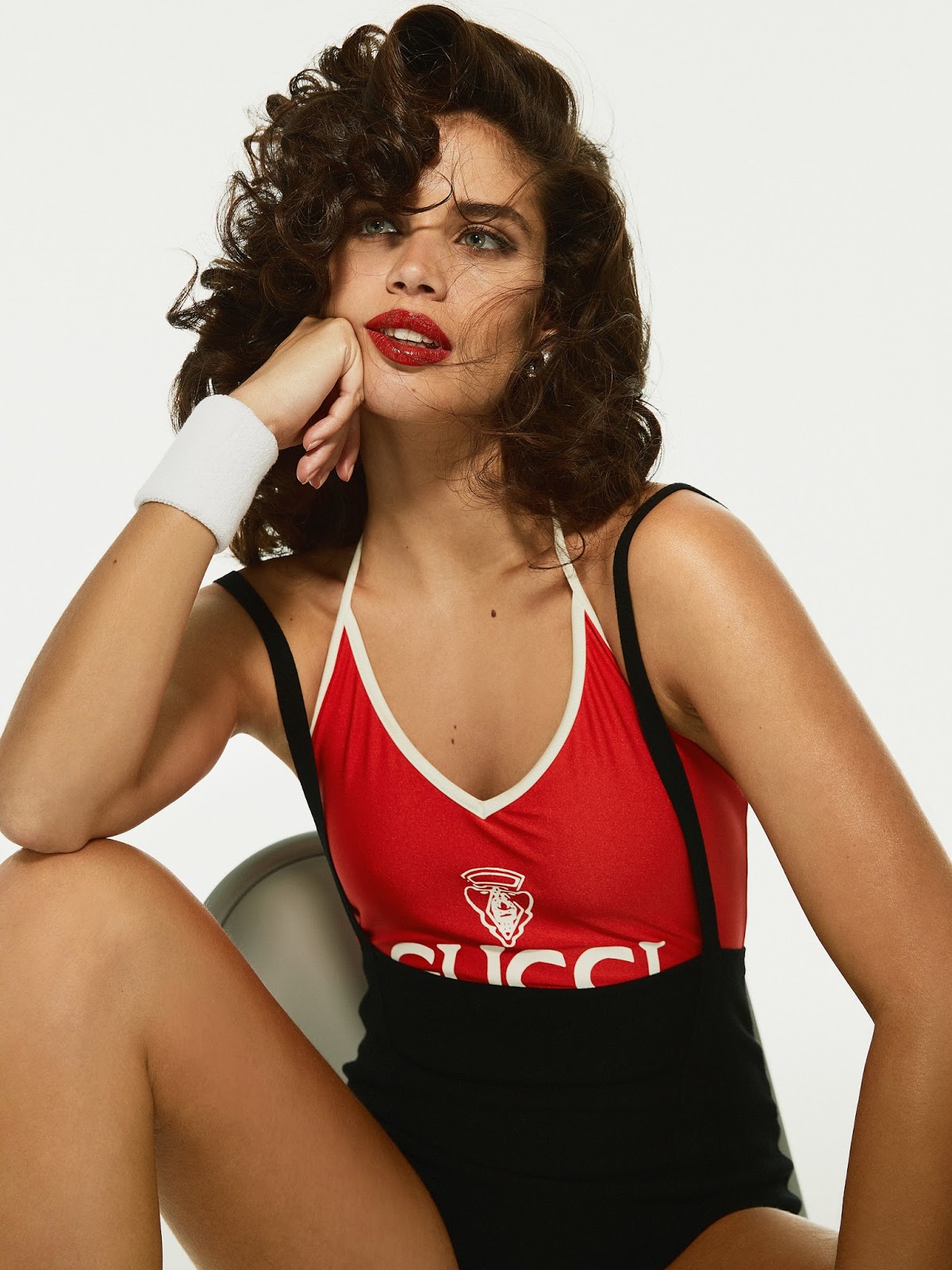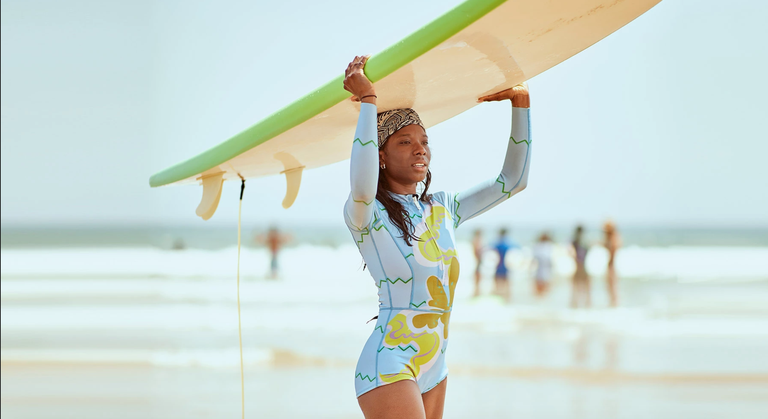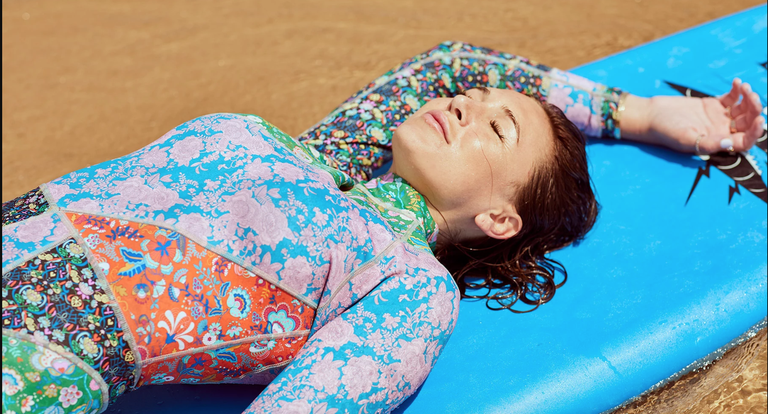Cynthia Rowley Asks: Is Your Swimsuit Hurting the Oceans? Change Your Ways Then
/If anyone can benefit from surfing in the Atlantic Ocean as a form of meditation, it’s veteran designer Cynthia Rowley. Montauk’s CR Suf Camp is headquarters for a meetup between Rowley and ELLE writer Faran Krentcil.
Rowley has battled fierce financial challenges for the last year, but her life is calm compared to the state of the world’s oceans. And surfers play their part in environmental damage. “Surfing is a reminder the world is bigger than me," Rowley explains, urging me back into the sea as the tide calms down. "The ocean is bigger than any of my problems.”
“Surfers are some of the most eco-conscious people in the world,” says Rowley, who's teamed with charities like the Surfrider Foundation to help promote cleaner beaches worldwide. “But for a long time, our primary uniform—the wetsuit—was made with polyester and really harmful plastics! The irony is mind-boggling... Once I saw how much plastic was in normal neoprene, I knew [surf wear] had to evolve.”
At a time when new designers are burnishing their eco-cred, Rowley has been marketing sustainable wetsuits, one-pieces, and bikinis for nearly 12 years. Partnering with a Thai factory for 12 years, Rowley may be one of the unsung heroes in today’s battle for sick oceans.
“We started with the basic stuff—figuring out how to make swimsuit ‘skin’ from recycled plastic bottles,” Rowley explains. “The ‘carbon black,’ which is the spongy filler inside neoprene? We make it with recycled tires. And then there are components nobody thinks about, like glue. Every wetsuit uses glue, and so do a ton of swimsuits. But glue is often made from harsh chemicals—we don’t want that. So we found a water-based glue instead. If some of it sheds or erodes, that’s okay—it’s water!” As for the neoprene itself, Rowley’s team makes it with limestone instead of liquid plastic, swapping out a toxic material for one that biodegrades.
And why not wear wetsuits year-round, asks Rowley. And be a poser? In response to die-hard surfers who object to wannabes co-opting their authentic fashion gear, the designer is frankly philosophical. “On the one hand, I get that some surfers treat their wetsuit like a tool, something that really belongs to them as part of surf culture, and they don’t want it co-opted as a fashion item. But we’re trying to change that, because surf culture can’t exist without sustainable living. And if you can turn one item of clothing into like three different outfits, and you love how you look? Then screw it and wear what you want.”
Stopping by CynthiaRowley.com to shop swimsuits, we note that there’s no mention of the great story behind the designer’s sustainable credentials. Searching in earnest for discussion of her commitment to sustainability, we note her CR Surf Camp story but nada on any mention of her concern for oceans.
Perhaps this is why eco-conscious fashionistas know little about Cynthia Rowley’s passion for returning our oceans to their natural glory. That’s a shame, because her story is a good one. ~ Anne
Cynthia Rowley’s CR Girls Camp in Montauk, Long Island, New York







